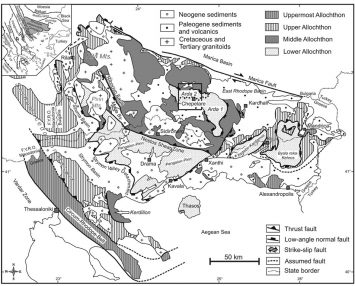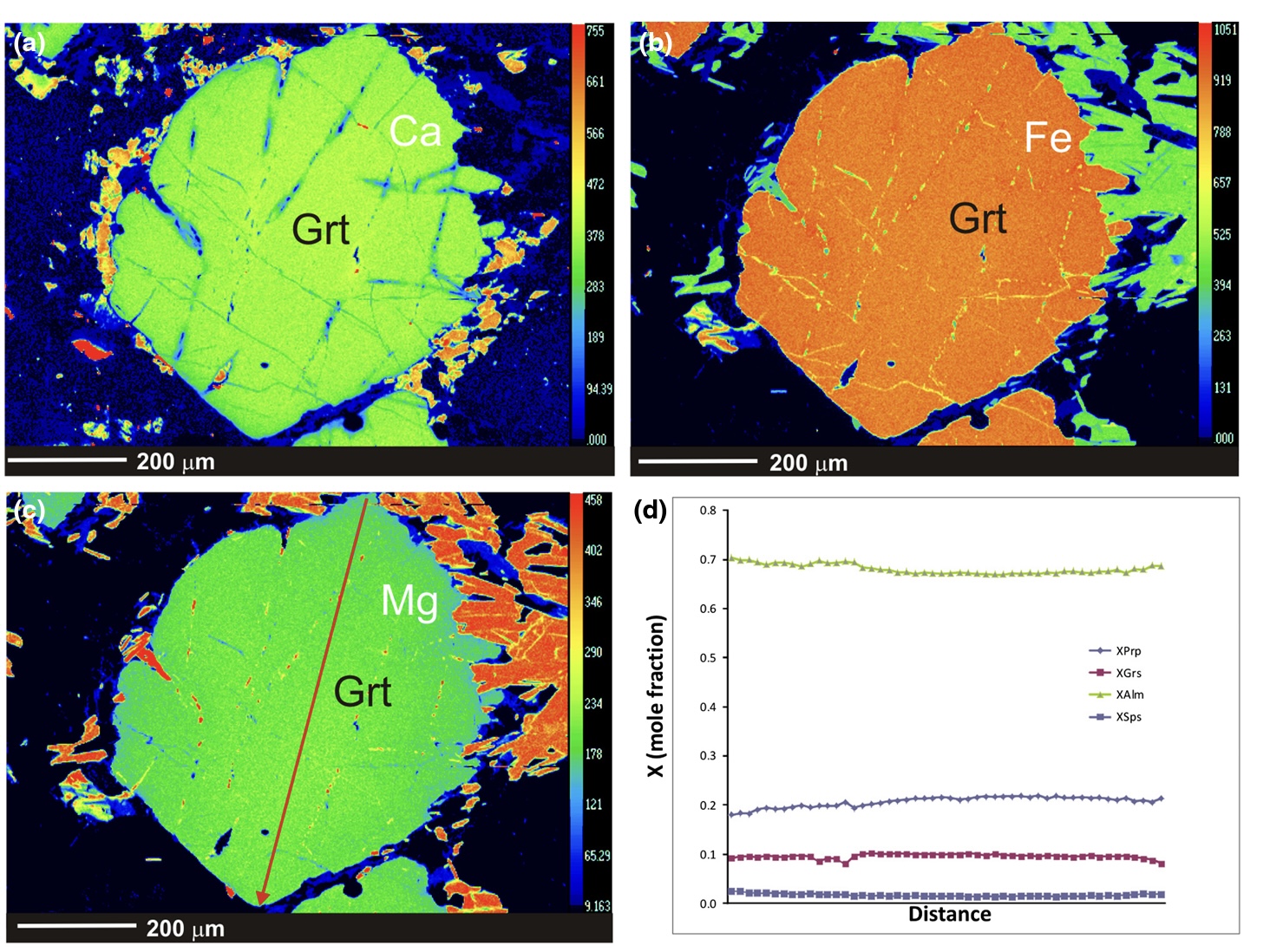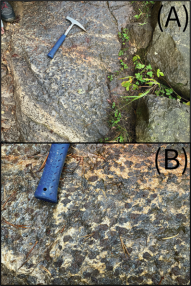Geologic Setting
Unique occurrences of diamond in pelitic gneiss, variably overprinted by granulite facies metamorphism, are known from several areas of the Rhodope Mountains in Bulgaria. Diamond-bearing gneiss from this study originates from a strongly deformed, lithologically heterogenous zone (Chepelare Mélange) located between two migmatized orthogneiss units (Figure 1; Petrik et al., 2016). Previous work by Petrik et al. (2016) on monazite petrochronology indicates that ultrahigh-pressure metamorphism of this unit occurred in Late Triassic to Early Jurassic time, in the framework of collision and subduction of continental crust after the closure of the Paleotethys. Their study has revealed a complicated, multistage metamorphic and deformational history of this gneiss and surrounding units. However, major element mapping of garnets was nearly homogenous without any compositional or microtextural evidence of re-growth. Considering the complicated metamorphic history of these rocks preserved in accessory phases such as monazite, trace element mapping of garnet has a high potential to provide additional information regarding mineral growth and dissolution during metamorphism and increase the resolution of the P-T-t path previously developed.

Figure 1. Geologic map of the Rhodope metamorphic complex and surroundings from Petrik et al. (2016). The sample location for this study is found within the rectangle.

Figure 2. Previously obtained EPMA major element garnet maps from Petrik et al. (2016). Diffusional zonation appears to have been completely lost, either during the initial ultra-high pressure metamorphic event or during partial melting.
At the sample location, the diamond-bearing pelitic gneiss shows inhomogenous fabrics with mafic bands of garnet, biotite, and kyanite alternating with leucocratic bands of K-feldspar, quartz, and minor plagioclase (Figure 3). The rock is coarse-grained, with abundant garnet and kyanite forming porphyroblasts up to 3-4 cm. Segregations of leucocratic veins and pods indicate partial melting. Previously mapped garnet compositions correspond to almandine-pyrope-grossular-spessartine solid solution (Petrik et al., 2016).

Figure 3. Field photographs from the sample location of the migmatitic garnet-kyanite gneiss. (A) Photograph highlighting the inhomogenous, leucocratic layers. (B) Close-up image of the large diamond-bearing garnet porphyroblasts.